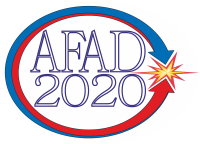Speaker
Dr
Chaoen Wang
(Nstional Synchrotron Radiation Research Center)
Description
Two light sources, the Taiwan Light Source (TLS) and the Taiwan Photon Source (TPS), are operated concurrently at NSRRC to service its synchrotron radiation users. The former is powered by one set of CESR-III type SRF module since 2005 and the latter is powered by two sets of KEKB-type SRF modules since 2015. Both are operated at 500 MHz and at 4.5 K. The light sources powered by SRF modules are expected to operate with great average beam power, up to few hundreds of kW, but with highly operational reliability and availability. Both are challenge because of enhancement of multipacting via condensation/absorption of residual gases on the high power input couplers. Owing to poor processing efficiency of conventional RF conditioning, also named as short memory of RF conditioning, frequent thermal cyclings are required to unload the condensed/absorbed gases which not only costs considerable manpower and sacrifices the operational availability, but also shortens the service lifetime of operational SRF modules significantly because of thermal fatigue of indium sealing. In addition, malfunction or maintenance of cryogenic plants interrupts the SRF operation which frequently results in unnecessary full thermal cycling of SRF modules owing to insufficient inventory of liquid helium. Highly reliable and available SRF operations have been achieved at NSRRC for years. Here, we review how we manager the SRF operation.
Primary author
Dr
Chaoen Wang
(Nstional Synchrotron Radiation Research Center)

